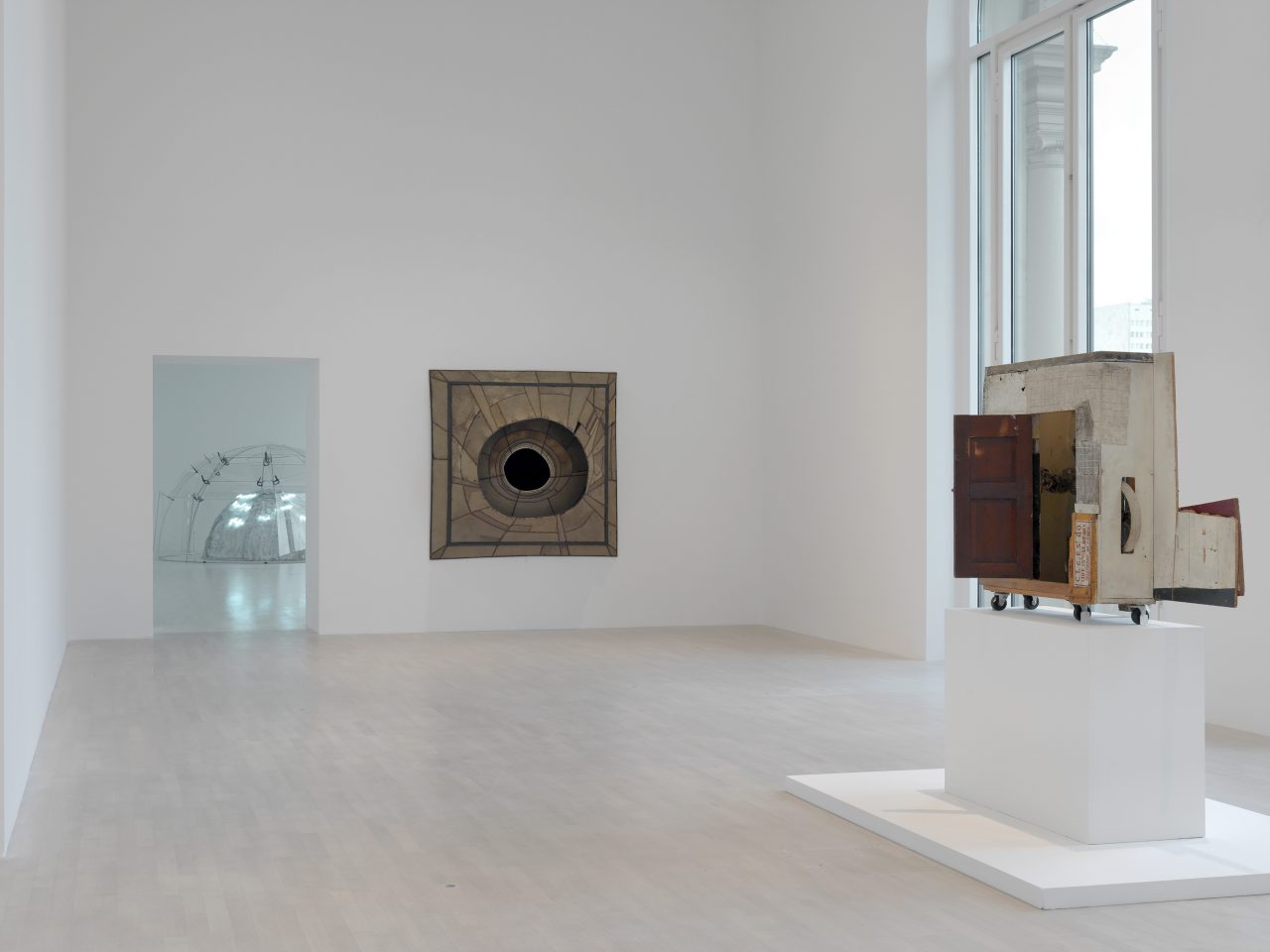14. April – 1. October 2016
K21 | Kunstsammlung Nordrhein-Westfalen, Düsseldorf
Curators: Valerie Hortolani and Nóra Lukács
Concurrently with the retrospective Alberto Burri. The Trauma of Painting, which features approximately 70 loans from European and US-American museums and private collections, a separate exhibition in the Bel Etage of K21 presents examples of material-based art from the permanent collection of the Kunstsammlung North Rhine-Westphalia. A dialogue with works by artists such as Lucio Fontana, Robert Rauschenberg, Lee Bontecou, and Jannis Kounellis highlights the centrality of Burri’s contribution to postwar abstraction and his sustained influence on subsequent artistic tendencies. This selection from the Düsseldorf-based collection demonstrates Burri’s ties to movements like Arte Povera in Italy or Nouveau réalisme in France and to US-American artists visiting Italy in the Postwar period.
In the 1950s, the versatile characteristics of a variety of materials also began to grab the attention of several artists in the USA. One main impetus may have been the 1953 visit of Robert Rauschenberg and Cy Twombly to Alberto Burri’s studio in Rome, where they saw his Catrami, Bianchi, Muffe, and Sacchi. After his return to the United States, Rauschenberg began creating his so-called Combines: he produced assemblages of diverse materials and embedded fabrics in paint. The box-like object in this exhibition, Inside out (1962) belongs to a later series of this group of works. Lee Bontecou came to Rome in the mid-1950s and began fabricating her characteristic wall reliefs from steel, wire, and tarpaulin in 1959, including Untitled (1959/60), on view here. These expansive sculptures recall both technical objects and organic structures. In Richard Serra’s work Out-of-Rounds XIX (1999), composed of wax crayons on paper, the rough black of the circular form rubbed into the surface evokes the black of Burri’s Catrami and Cretti.
While many artists after of World War II experimented with thickly applied paint, Burri was ahead of his time in his use of ready-made materials with which he created a new form of assemblage. Likewise, Piero Manzoni relied on everyday or industrial materials, including glass fiber or pieces of canvas soaked in kaolin in his Achrome (“non-color”) works. Contemporary with Lucio Fontana and his Concetto spaziale series, Burri also ruptured the picture plane and damaged the canvas with acts of apparent violence. At the same time, the highly structured surfaces of Burri’s work were also precursors of a new kind of monochrome painting.
Alberto Burri’s radical experiments with fabric, plastics, and wood, as well as his processes of stitching and burning had a definite impact on Arte Povera in the 1960s. Just like Burri himself, these young artists, turning their backs on high art, preferred basic actions, a makeshift approach, and everyday materials. At the same time, Arte Povera artists often charged their humble materials with new metaphorical meanings, such as Jannis Kounellis in his assemblage Untitled (1988), consisting of burlap and iron in which three scarab beetles are integrated that resemble gems. While many practitioners of Arte Povera moved into installation art, Burri always considered his work painting, to be hung on the wall.
Against the backdrop of the heightened interest in material questions in recent contemporary art, Burri’s work seems astonishingly current – as confirmed by some artist’s rooms simultaneously on view at the K21, such as the installation FOOD DISTRIBUTION CORPORATION by Ghanaian artist Ibrahim Mahama. On the occasion of the exhibition, #32 commissioned Nóra Lukács to interview contemporary artists in their studios about the role of the material in their work. View the videos here.
Artists:
Lee BONTECOU, Lucio FONTANA, Yves KLEIN, Jannis KOUNELLIS, Piero MANZONI, Mario MERZ, Robert RAUSCHENBERG, Kurt SCHWITTERS, Cy TWOMBLY

Installation view Bel Etage, K21
Photo: Achim Kukulies, Kunstsammlung Nordrhein-Westfalen
